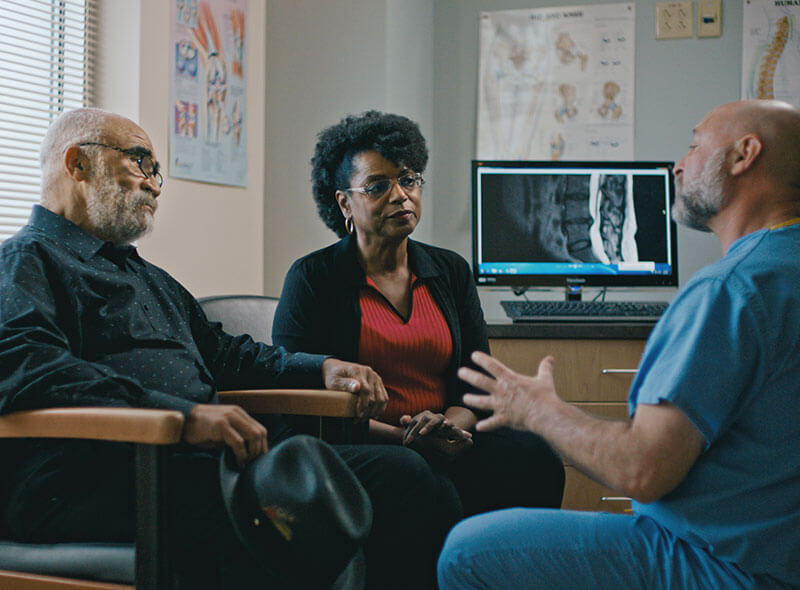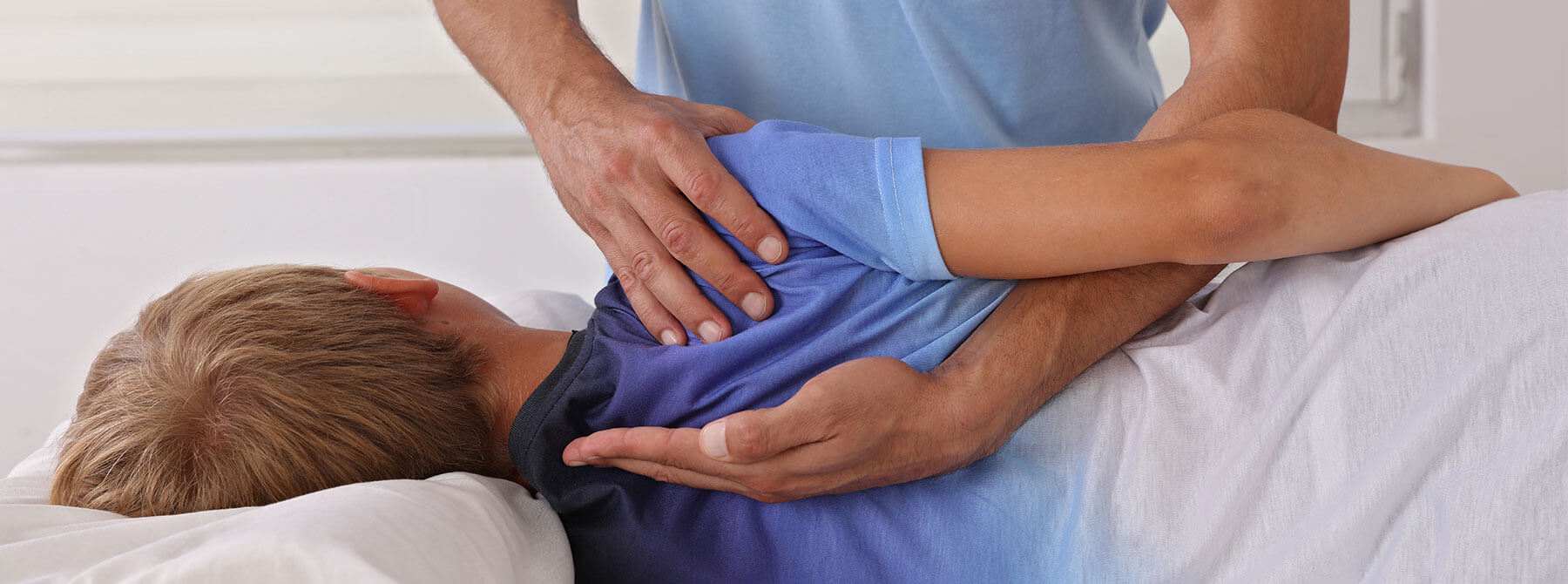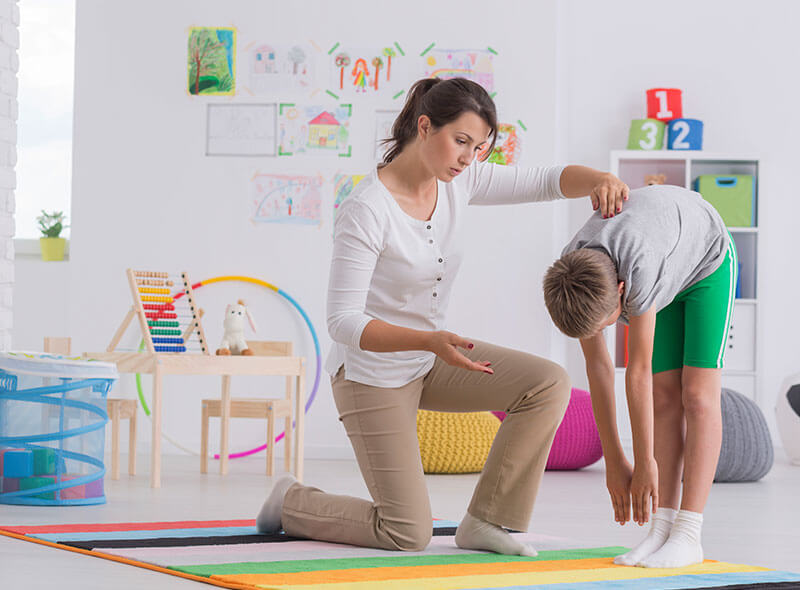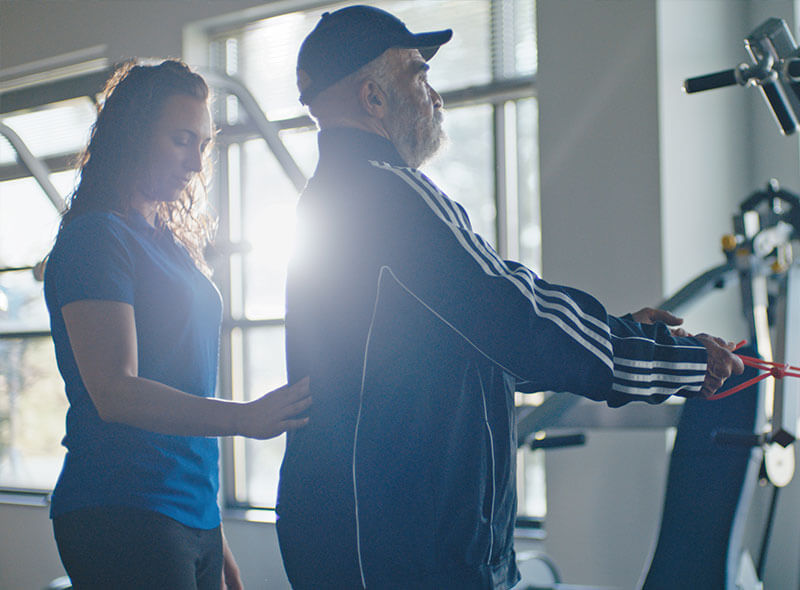The ultimate guide to
Scoliosis Treatment
Don’t let scoliosis keep you or your child from an active lifestyle – learn more about scoliosis causes, symptoms, how to tell if you have scoliosis and treatment options.
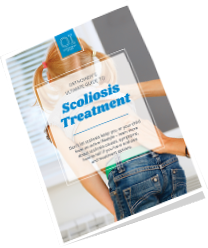
This guide discusses...
You shouldn’t have to live with a spinal deformity
No one should have to live with pain from mild or severe scoliosis. Living with a spinal deformity is not only a physical impairment but an emotional one as well. Having a spinal curve may cause emotional stress, body image concerns or withdrawal from activities you enjoy. This is especially hard on young children – who should focus on being a kid and not worry about how their scoliosis is affecting their life.
OrthoIndy’s fellowship-trained spine surgeons will diagnose and treat your spine condition. Our team of spine experts offer treatment options to help you enjoy life to the fullest.
OrthoIndy’s Ultimate Guide to Scoliosis Treatment will help you better understand the types of scoliosis, how to tell if you have it and how non-operative options or surgery may correct your spinal deformity.
The first step to finding relief from scoliosis pain is to determine the severity of the deformity. Whether you’re beginning to research the condition, or you have already made the decision to have surgery, this guide includes answers to common questions and examples of real patient success stories.
1 What is scoliosis?
When most adults think of scoliosis, they may remember lining up in grade school for the school nurse to give them a scoliosis test.
But what is scoliosis, who is most affected and what are the signs you or your child might have it? To understand the condition, it’s important to understand the anatomy of the spine.
Spine Anatomy
The purpose of your spine, or backbone, is to protect the spinal cord. Your spinal cord and nerves travel through the spinal canal carrying messages between your brain and muscles.
The spine consists of 24 spinal column bones, or vertebrae, stacked on top of each other to form the spinal column. In between each vertebra is a flat, flexible disc that acts as a shock absorber when you walk or run and allows movement between the vertebrae. Your spine has three segments: the cervical spine (neck), the thoracic spine (middle) and the lumbar spine (lower back).
If you look at someone from the back, the spine should be straight up and down, and the shoulders and hips should be symmetric and level.
What is a spinal deformity?
When looking at a healthy spine from the side, you will notice a gentle, natural spine curve at the neck and lower back. A spinal deformity is an unnatural curvature of the spine. There are several types of spinal deformities:
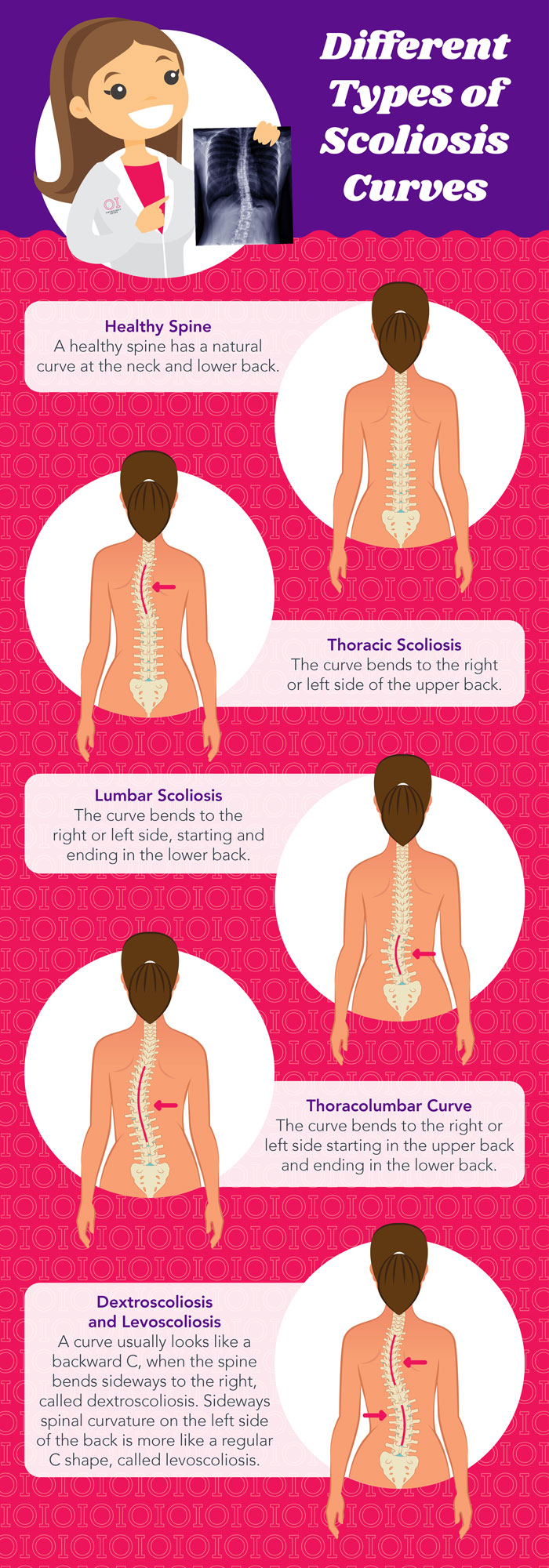
- Lordosis: The c-shaped curves of the neck (cervical spine) and lower back (lumbar spine).
- Kyphosis: Also referred to as hunchback, flat back, round back or gibbous deformity, is the reverse c-shaped curve of the chest (thoracic spine).
- Sagittal plane imbalance: This is when someone is having trouble standing up straight. This usually results from having either too much kyphosis or not enough lordosis.
- Scoliosis: An unnatural, sideways curvature of the spine. Scoliosis is the most common type of spinal deformity.
How common is scoliosis and what are the types of curves?
Scoliosis is not an uncommon condition and can develop in children and adults. “The condition affects between 2 to 3% of children,” said Dr. David Schwartz, OrthoIndy spine doctor located at OrthoIndy Fishers. “It is more common in girls and it presents most commonly between 10 and 12 years of age.”
READ ARTICLE: WHAT YOU SHOULD KNOW ABOUT CHILDREN AND SCOLIOSIS
When looking at someone with scoliosis from the back, the curve usually looks like a backward C, when the spine bends sideways to the right, called dextroscoliosis. Sideways spinal curvature on the left side of the back is more like a regular C shape, called levoscoliosis. The spine may also have an S shape appearance involving both the mid-back (thoracic spine) and lower back (lumbar spine).
Scoliosis curves are described by where they are in the spine (thoracic, thoracolumbar, lumbar spine). There is usually more than one location of curvature when scoliosis is present. The size of the curves is then measured on radiographs (X-rays).
“Scoliosis is measured using a protractor by making a line across the top of the most tilted bone in one direction and compare that to a line on the bottom of the most tilted bone in the opposite direction,” said Dr. John Dietz Jr., an OrthoIndy spine surgeon, located in Indianapolis and Westfield. “The angle that the two lines form is called the Cobb angle and that is how we determine the size of the curve.”
Learn more about the different types of curves by downloading our scoliosis degrees of curvature chart.
Scoliosis Curves
OrthoIndy spine surgeon, Dr. John Dietz Jr. talks about the different scoliosis degrees and whether you have mild, moderate or severe scoliosis.
2 What are the causes, types and symptoms?
You may be asking yourself, “How do you get scoliosis?” When kids get scoliosis, the cause of the scoliosis is usually unknown – something doctors call “idiopathic” – and the children are usually otherwise healthy. While it is not known exactly what causes idiopathic scoliosis, we do know that it is genetically linked and there are about 300 genes that contribute to a child’s development of idiopathic scoliosis. When adults get scoliosis, the most common cause is aging of the spine joints and discs, called degeneration.
Some other less common causes may include:
- Cerebral Palsy
- Muscular Dystrophy
- Spina Bifida
- Degenerative Disc Disease
- Birth Defects
- Spine Injuries
- Infections of the Spine
The different types of scoliosis include idiopathic, congenital, degenerative, neuromuscular, thoracogenic and syndromic.
“The most common type of scoliosis is idiopathic,” said Dr. Schwartz. “While the cause is unknown, this type of scoliosis is genetic.”
Idiopathic scoliosis usually becomes noticeable during adolescence. It tends to run in families, but other than that, it has no known cause. It can also develop in adults.
Idiopathic scoliosis is categorized by the age it develops:
- Infantile idiopathic: from birth to 3 years old
- Juvenile idiopathic: from 4 to 9 years old
- Adolescent idiopathic: from 10 to 18 years old (the most common idiopathic because it is when rapid growth typically occurs)
- Adult idiopathic: older than 18 (a continuation of the disease from childhood)
VIDEO: LEARN MORE ABOUT SCOLIOSIS IN CHILDREN
Congenital scoliosis
Congenital scoliosis is a rare condition that develops in utero and is present at birth. The vertebrae do not develop fully, causing the spine to grow uneven.
According to the American Academy of Orthopaedic Surgeons, “It (congenital scoliosis) occurs in only 1 in 10,000 newborns and is much less common than the type of scoliosis that begins in adolescence.”
The condition is usually diagnosed by the pediatrician who is examining the child at birth. Usually, surgery will correct the spine abnormality.
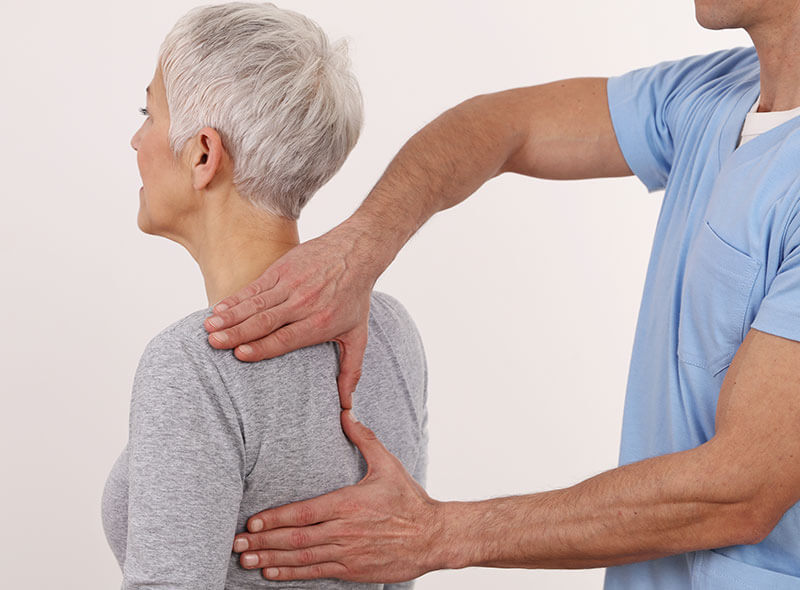
Adult Guide to Scoliosis Treatment
Scoliosis also develops in adults. Learn more about non-operative and surgical treatment options for scoliosis in individuals over 18 years old.
Degenerative Scoliosis
Another form of scoliosis is adult degenerative scoliosis, which develops in adulthood.
“Degenerative scoliosis is the aging and deterioration of the discs and joints in the spine,” said Dr. Kevin O’Neill, an OrthoIndy spine doctor. “This asymmetrical disc deterioration causes the spine to curve, usually in the lumbar spine.”
The condition is most common in older patients, particularly women, and is often related to spinal osteoporosis and degenerative disc disease.
VIDEO: LEARN ABOUT SCOLIOSIS IN ADULTS
Neuromuscular, thoracogenic and syndromic scoliosis
Less common types of scoliosis include neuromuscular, thoracogenic and syndromic scoliosis.
- Neuromuscular scoliosis is caused by a neurological or muscular disease, such as cerebral palsy or muscular dystrophy.
- Thoracogenic scoliosis is the asymmetrical spinal development in the thoracic cage caused by surgery or disease.
- Syndromic scoliosis is a sideways curve of the spine that develops as part of a syndrome or disorder including muscular system or connective tissue disorders.
What are the most common scoliosis symptoms?
The most obvious symptom of scoliosis is the curvature of the spine. Any sideways or lateral curvature of the spine, that measures at least 10 degrees on an X-ray, is considered scoliosis. A curve that small does not usually show any symptoms. As the curve grows to 20 degrees or beyond, more obvious symptoms appear.
Signs of how to tell if you have scoliosis include:
- Uneven shoulders
- Uneven waist
- Ribs that stick out farther on one side of the body
- A rotating spine
“In most cases, children won’t experience scoliosis back pain,” said Dr. Schwartz. “Most children present with one shoulder blade higher than the other or tan lines that aren’t centered.”
Ill-fitting clothing is another complaint or sign there may be a spine deformity. The body’s asymmetry can create a challenge in finding clothes that fit and make you feel confident about your body. This is especially common in teenage girls with scoliosis.
Unlike children with scoliosis, adults with scoliosis most commonly present with pain. Back pain is often the result of arthritis or degenerative discs but may also be related to spinal stenosis. Pain down the legs – known as sciatica or radiculopathy – can be caused by a pinched nerve and may be associated with weakness, numbness, or tingling.
- Back pain, especially low back pain, from arthritis or degenerative disc disease
- Spinal stenosis
- Pain, weakness, numbness or tingling down the leg caused by sciatica or radiculopathy (pinched nerve)
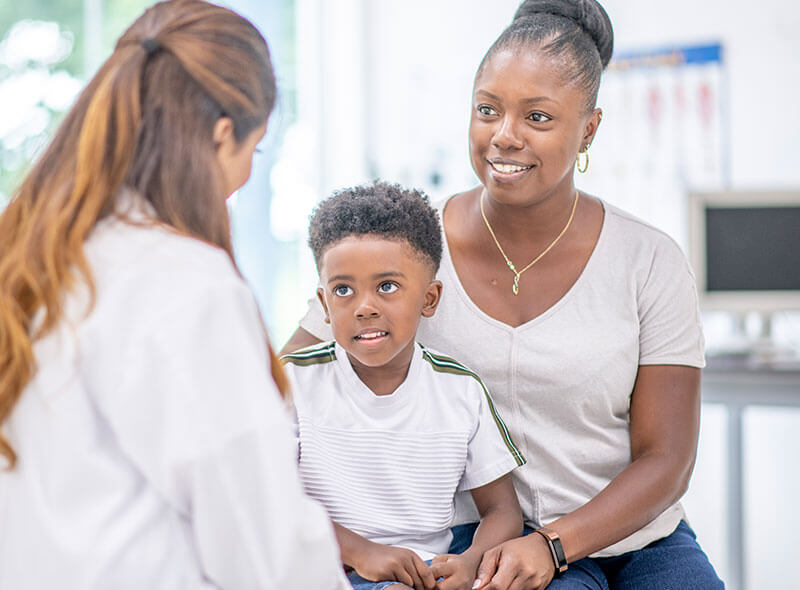
Parent’s Guide to Scoliosis
The OrthoIndy spine doctors put together a guide for parents to learn more about symptoms and treatment options for idiopathic scoliosis.
3 What are the treatment options?
Anyone can do a simple check at home to see if they have any signs of scoliosis. Dr. Greg Poulter, an OrthoIndy spine doctor, gives step-by-step instructions on how to check yourself or your child at home.
“I recommend that people be aware of scoliosis throughout a child’s growth and development, but recommend they start looking more closely around age 10 or 11 as that is when many of these curves become visible,” said Dr. Poulter. “The process to check for scoliosis is the same for children and adults. Although the process is the same what we find for a patient will defer based on their age.”
video: dr. poulter shows you how to check for scoliosis
Routine screenings aren’t performed in schools anymore. Young children will usually find out they have scoliosis during a wellness check with their pediatrician.
If you suspect you or your child have scoliosis, the next step is to schedule an appointment with an orthopedic spine doctor. The process to diagnose the condition is the same regardless of the type of scoliosis.
How is a spinal deformity diagnosed?
The OrthoIndy Spine team consists of seven fellowship-trained orthopedic spine surgeons. The spine doctors at OrthoIndy use the latest technology and surgical procedures to treat your condition by reducing your back pain and improving your quality of life.
During your appointment, your physician will:
- Ask you for a complete medical history
- Ask you to describe symptoms
- Conduct a physical examination
- Take X-rays or an MRI to confirm the diagnosis
FIND A SCOLIOSIS DOCTOR NEAR ME
Treatment in children
If the spinal curve is between 25 and 40 degrees, your spine doctor will try non-surgical treatment options before recommending surgery. These treatment options include observation or bracing.
“A scoliosis patient will wear a custom fit spinal brace, often part-time until they reach skeletal maturity,” said Dr. Michael Coscia, an OrthoIndy spine doctor treating patients in Indianapolis and Greenwood. “For young ladies, this is at about the two-year point after they began having their monthly periods. For young men, it varies depending on what age they initiated their growth spurt.”
Dr. Coscia adds that during the bracing period they use X-rays to check your progress every six months.
A scoliosis brace prevents the curve from getting worse. Children wear the brace until they have finished growing.
When curves exceed 45 degrees, your back doctor will talk to you about surgical options.
SCOLIOSIS BRACE TYPES AND RESOURCES
Treatment in adults
For adults, the most common non-surgical treatments include:
- Observation by your spine doctor
- Physical therapy focusing on developing core strength
- Nonsteroidal anti-inflammatory drugs (NSAIDs) for back pain
- Moist heat on your back
- Steroid injections
“Non-surgical treatments in adults treat the scoliosis symptoms and not necessarily the curvature of the spine,” said Dr. O’Neill. “In most cases, adults will not need surgery; however, surgery may be performed to relieve pressure on the spinal cord, stop the condition from worsening, or to reduce or stabilize the deformity.”
When curves exceed 45 degrees, your back doctor will talk to you about surgical options.
READ ARTICLE: IS IT TIME FOR BACK SURGERY?
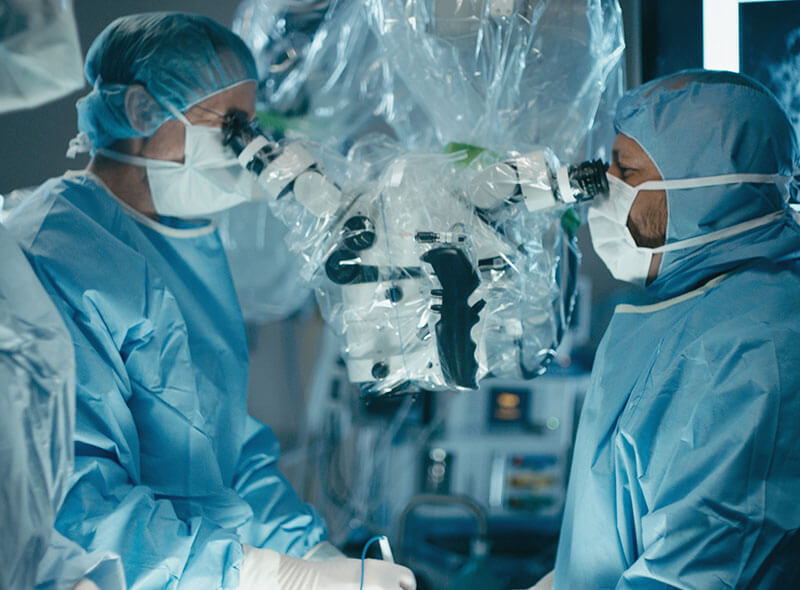
Spinal Fusion Surgery Video
Dr. Schwartz walks you through an actual scoliosis surgery. Please note that some of the images in this video may be considered graphic.
When non-operative treatments aren’t effective, or if the curves are big enough that they would likely worsen over time, your doctor will talk to you about surgery.
To reduce the curve and improve stability, your surgeon will likely perform a spinal fusion. The procedure permanently fuses the affected vertebrae together. This allows the vertebrae to heal as a single, solid bone, eliminating motion between them.
Read article: what is a spinal fusion surgery?
What are scoliosis surgery risks?
As any surgeon will tell you, with any surgery there are risks. While spine surgery is safe, some risks may include:
- Infection
- Pain at the graft site
- Bleeding or blood loss during surgery
- Nerve damage or spinal cord injury
- Complications from the implant
- Formation of blood clots in the legs
- Nonunion, which is when the vertebrae do not grow together
If your condition requires surgery, the spine surgeons at OrthoIndy have surgical privileges at their very own orthopedic-specialty hospital. OrthoIndy Hospital has received national recognition for its spine care and patient satisfaction. These awards include:
- America’s 100 Best Hospitals for Spine Surgery according to new research released by Healthgrades
- Five-Star Recipient for Spinal Fusion Surgery by Healthgrades from 2014 to 2020
- Recipient of the Healthgrades 2020 Patient Safety Excellence Award
- 2009 to 2019, Press Ganey Associates, Inc., Guardian of Excellence Award winner for consistently achieving the 95th percentile of performance in patient satisfaction.
- Anthem’s Blue Distinction Center (Blue Distinction Center+ or BDC+ or BDC/+) Program for Spine Surgery
Are there alternatives to spinal fusion surgery?
One alternative to a spinal fusion surgery is a non-fusion surgery or anterior vertebral body tethering. “This type of surgery corrects the curve without having to fuse it,” said Dr. Schwartz. “The research on it is still early with regards to success.”
While it’s not an alternative to a spinal fusion, your OrthoIndy physician may use a spine robot or intra-operative navigation to help with your spinal fusion surgery. OrthoIndy Hospital was the first hospital in Indiana to purchase the Mazor XTM Robotic Guidance System.
“The Mazor X is a tool that does not replace me as a surgeon but rather enhances my ability to safely and reliably perform surgery,” Dr. Poulter said. “Robotics is revolutionizing adult scoliosis surgery and we are at the forefront of this technology.”
READ ARTICLE: HOW SPINE ROBOTICS ARE USED TO CORRECT SPINAL CURVES
Is it time for treatment?
If you suspect you have scoliosis, download our flowchart to determine the next steps.
4 What can I expect after scoliosis treatment?
Because children are still growing during treatment and children and adults heal differently, recovery is different.
Recovery in children
For mild cases in children that do not need surgery, the curve may straighten or stabilize with non-surgical options such as bracing or physical therapy. In children, the length of time in the brace depends on the severity of the curve and when the child finishes growing. Those who have surgery, recovery will also depend on the severity of your condition. After back surgery in children, most patients are walking the night of surgery and are home in three days. Children may be back at school within two weeks of surgery.
For spinal fusion, the process for the vertebrae to fuse together takes approximately six months. You will see your spine surgeon regularly to get images taken of your spine to make sure the process is occurring without complications.
Recovery in adults
In adults, treatment is usually focused on reducing pain. Nonsurgical treatments are always tried first and are often successful at reducing or eliminating pain. If surgery is an option, a spinal fusion is generally needed. The length of recovery for adults depends on several factors such as how invasive the surgery needs to be, the age and condition of the patient, and what other medical conditions the patient may have.
What is physical therapy for scoliosis?
Your physician will prescribe physical therapy following your back surgery at an OrthoIndy Physical Therapy location. Your physical therapist will prescribe exercises to help build strength and flexibility following your spine surgery.
“In general, we prescribe exercises to regain and maintain the mobility and flexibility of surrounding joints that scoliosis affects like your shoulders, neck and hips to keep them healthy,” said OrthoIndy physical therapist, Megan Boland. “We make sure not only to work on neck, thoracic and lumbar stability and strength, but also make sure you have a safe long-term exercise program at home.”
read article: PHYSICAL THERAPY FOR SPINAL FUSION PATIENTS
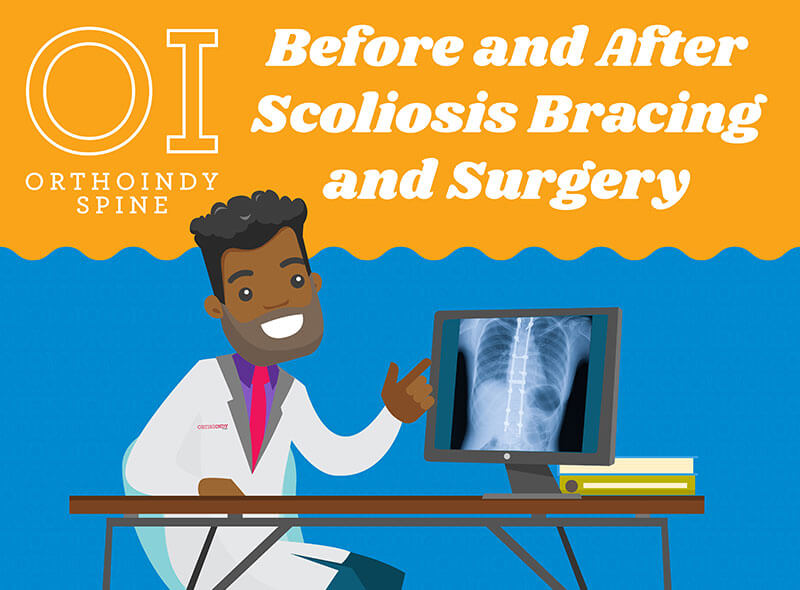
Before and After Scoliosis X-rays
See the difference yourself. Look at before and after photos of a scoliosis spine.
Life after scoliosis treatment
It is important to know that scoliosis is treatable, and you can live a successful and happy life.
“Once a child is treated for scoliosis, they will have a completely normal life, even if they have surgery,” said Dr. Schwartz. “Following treatment, kids resume activities they once loved.”
Adult patients who have undergone surgery usually report improved function and reduced or no pain.
Hear from real-life patients whose scoliosis curves were treated by the spine team at OrthoIndy.
- Kelsi Hart: Patient had successful scoliosis surgery at OrthoIndy after three unsuccessful surgeries at other facilities.
- Audrey Symmes: A 22-year-old woman decided to stop living in pain and have spinal fusion surgery to correct her condition.
- Siara Quinn: Cheerleader didn’t let a spinal curve keep her from tumbling.
- Nancy Farrar: Woman resumes activities after surgery to treat her scoliosis and spinal stenosis.
Physical Therapy After Surgery
Your back surgeon may prescribe physical therapy after a spinal fusion to correct your scoliosis. Learn more about the exercises your physical therapist might describe and how they will help you rehab faster.
5 How much does scoliosis surgery cost?
Once you decide to have surgery, the idea of paying for an extensive surgery may be overwhelming. Before scheduling your back procedure, it’s important to check with your insurance provider to ensure OrthoIndy is in your network. OrthoIndy and OrthoIndy Hospital take part in most major insurance networks.
6 Scoliosis Treatment Resources
The OrthoIndy spine doctors have treated thousands of patients with back and neck conditions. Many patients express gratitude for getting their lives back, free from back pain.
Guides
- Adult’s guide to scoliosis treatment
- Back Surgery Checklist
- Comprehensive Guide to Minimally Invasive Spine Surgery
- OrthoIndy spine robotics guide
- Parent’s guide to idiopathic scoliosis
- Pros and Cons of Back Surgery
- Questions to ask your spine surgeon before surgery
Infographics
Blog Articles
- What you should know about children and scoliosis
- Spinal fusion surgery
- Mazor X for scoliosis surgery
- Best exercises for scoliosis
Videos
What are the different types of curves and degrees of scoliosis?



